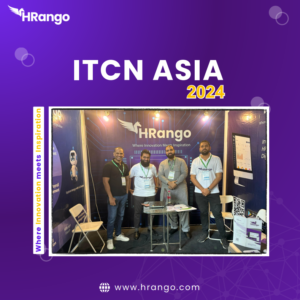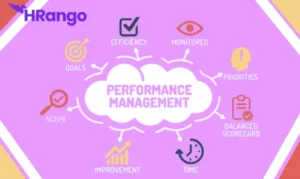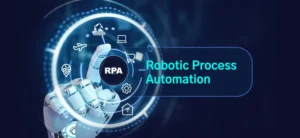In today’s rapidly evolving business environment, strategic workforce planning has become a critical component for organizations aiming to maintain a competitive edge. The integration of big data into human resource management systems (HRMS) has revolutionized the way companies approach workforce planning, enabling them to make informed decisions based on comprehensive data analysis. One such system that exemplifies this integration is hRango, a cutting-edge HRMS that leverages big data to drive strategic workforce planning.
What is big data in HRMS?
Big Data in HRMS refers to the vast volume of data generated from various HR-related activities, such as recruitment, employee performance, attendance, and more. This data, when properly analyzed, provides valuable insights that can help organizations make informed decisions regarding their workforce. Big Data encompasses structured and unstructured data, including social media activity, employee feedback, and even external market trends, which can be used to predict future workforce needs and trends.
How Does HRango Utilize Big Data for Workforce Planning?
hRango is designed to harness the power of big data to assist organizations in strategic workforce planning. By collecting and analyzing data from multiple sources, hRango enables HR professionals to identify patterns, predict future workforce needs, and make data-driven decisions. For example, hRango can analyze employee performance data to identify high-performing individuals who are suitable for leadership roles or to pinpoint areas where additional training may be required.
What are the Benefits of Using Big Data in Workforce Planning?
- Predictive Analytics: Big Data allows organizations to predict future workforce needs based on historical data and trends. This can help companies anticipate skill shortages, plan for future hiring, and ensure that they have the right talent in place to meet their strategic goals.
- Improved Decision-Making: By providing HR professionals with data-driven insights, Big Data enables more informed decision-making. This can lead to better workforce planning, optimized recruitment strategies, and improved employee retention.
- Cost Efficiency: Leveraging Big Data can help organizations identify inefficiencies in their workforce planning processes. For example, by analyzing data on employee turnover, hRango can help organizations reduce costs associated with hiring and training new employees.
- Enhanced Employee Engagement: Big Data can be used to monitor employee engagement and satisfaction levels, allowing organizations to address issues before they lead to turnover. By fostering a more engaged workforce, companies can improve productivity and reduce the costs associated with employee disengagement.
What Challenges Exist in Leveraging Big Data for Workforce Planning?
While big data offers numerous benefits for workforce planning, it also presents several challenges. These include:
- Data Privacy and Security: With the collection of large volumes of data, organizations must ensure that they have robust data privacy and security measures in place to protect sensitive employee information.
- Data Quality: The effectiveness of Big Data analytics depends on the quality of the data being analyzed. Organizations must ensure that their data is accurate, complete, and up-to-date to obtain reliable insights.
- Integration with Existing Systems: Integrating big data analytics into existing HRMS can be challenging, particularly for organizations that rely on legacy systems. hRango addresses this challenge by offering seamless integration with a variety of systems, ensuring that data from different sources can be easily combined and analyzed.
How Can Organizations Get Started with Big Data in Workforce Planning?
To leverage big data effectively in workforce planning, organizations should start by identifying the key metrics they want to track and analyze. This could include employee performance, turnover rates, recruitment metrics, and more. Once these metrics have been identified, organizations can implement an HRMS like hRango to collect and analyze the data. It’s also important to invest in training for HR professionals to ensure they have the skills needed to interpret the data and make informed decisions.
Conclusion
The integration of big data into HRMS like hRango has the potential to transform strategic workforce planning. By providing organizations with data-driven insights, hRango enables more effective decision-making, improved employee engagement, and greater cost efficiency. As organizations continue to navigate the challenges of the modern workforce, leveraging big data will be key to staying competitive in a rapidly changing business landscape.
FAQs
What is Big Data in HRMS?
Big Data in HRMS refers to the vast amount of data generated from HR activities like recruitment, performance, and attendance. It includes both structured data (like employee records) and unstructured data (like social media activity) that can be analyzed to gain insights into workforce trends.
How does hRango use Big Data for workforce planning?
hRango collects and analyzes data from various sources to help HR professionals identify patterns, predict future workforce needs, and make data-driven decisions. For example, it can highlight high performers for leadership roles or areas where additional training is needed.
What are the benefits of using Big Data in workforce planning?
Big Data helps in predictive analytics, improved decision-making, cost efficiency, and enhanced employee engagement by providing insights into future workforce needs, optimizing recruitment, reducing costs, and monitoring employee satisfaction.
What challenges exist in leveraging Big Data for workforce planning?
Challenges include ensuring data privacy and security, maintaining data quality, and integrating Big Data analytics with existing HR systems. hRango addresses these challenges with strong integration capabilities and data protection measures.
How can an organization start using Big Data for workforce planning?
Organizations can begin by identifying key HR metrics to track, like turnover rates and performance data. Implementing an HRMS like hRango can help collect and analyze this data, providing the insights needed for strategic workforce planning.







